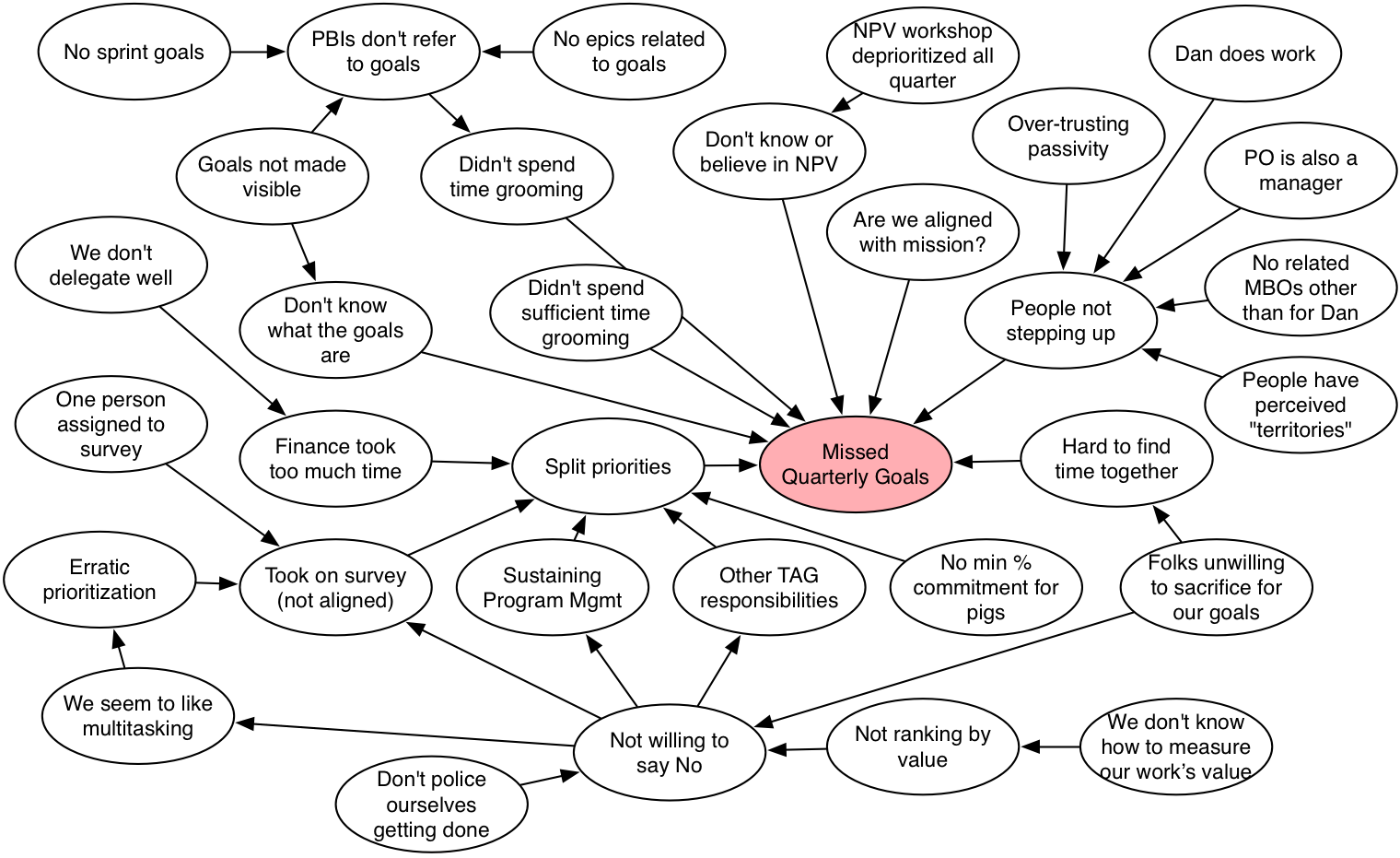-

Embrace Collective Responsibility
Context: It takes us time to decide to fix problems, and we let some problems fester because we don’t want to get anywhere near them. When we are on a team, we can blame someone or something else for a problem, and often do. We might blame our own permanent flaws for a problem, feeling guilty. None of…
-

Root Cause Mapping Party
Creative organizations, teams and leaders often encounter problems, as they explore new frontiers. In solving a problem, our biases can lead to a dysfunctional “fix”… Completing a task may involve many people and many steps. If it fails, we often focus on the last people involved or the last steps taken (Availability Heuristic). If we don’t look…
-

Measure Progress with Leading Indicators
Context: We can study others who succeed, imitate their activities and gain their skills. But these activities create nothing new. Once we have reached their capabilities, how do we know if we’ve improved? Completion metrics distract us from incremental improvement …
-

Religion vs Science in the Battle for Agile
While agile has zealots, it is not a religion. Agile is a scientific method that converts economic chaos to profit.
-

Product Owner
Enterprises often have lots of time-sensitive opportunities and insufficient skilled or creative people (called “developers” in this pattern) to do everything. Problem: Stakeholder competition distracts creative people, interferes with profitable work and creates office politics …
-

Develop Agile Managers, or Agile Dies
To sustain rapid adaptation and innovation, we need good agile managers. But management talent is rare, and agile management talent even rarer. Danger lurks when executives and managers don’t understand agile. You can tell when managers don’t understand agile: they don’t use it themselves. Agile methods, Scrum particularly, are perfect for managing creative teams, including management teams planning…
